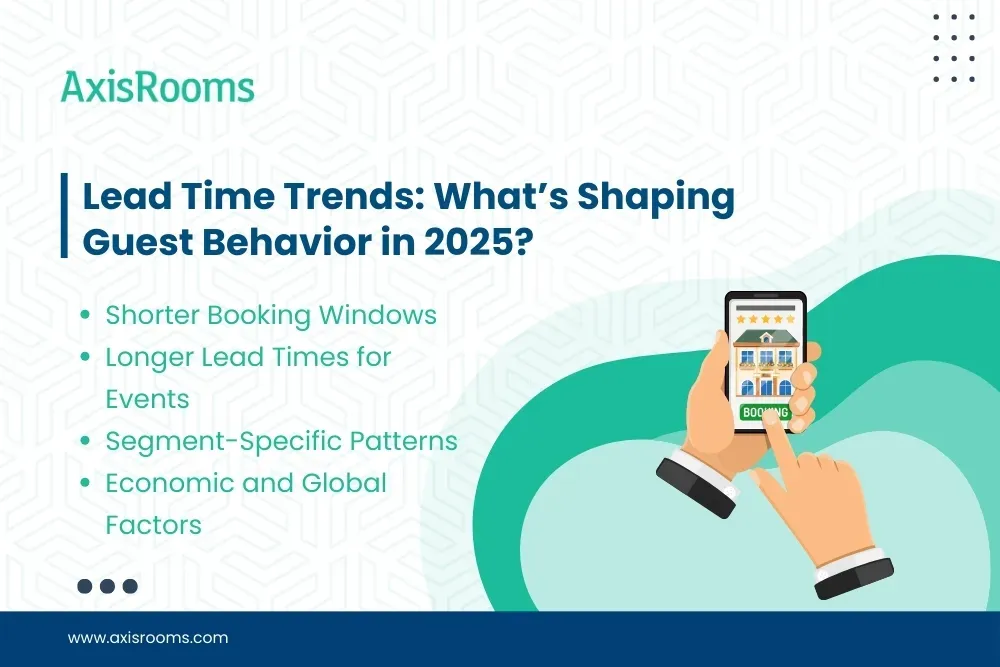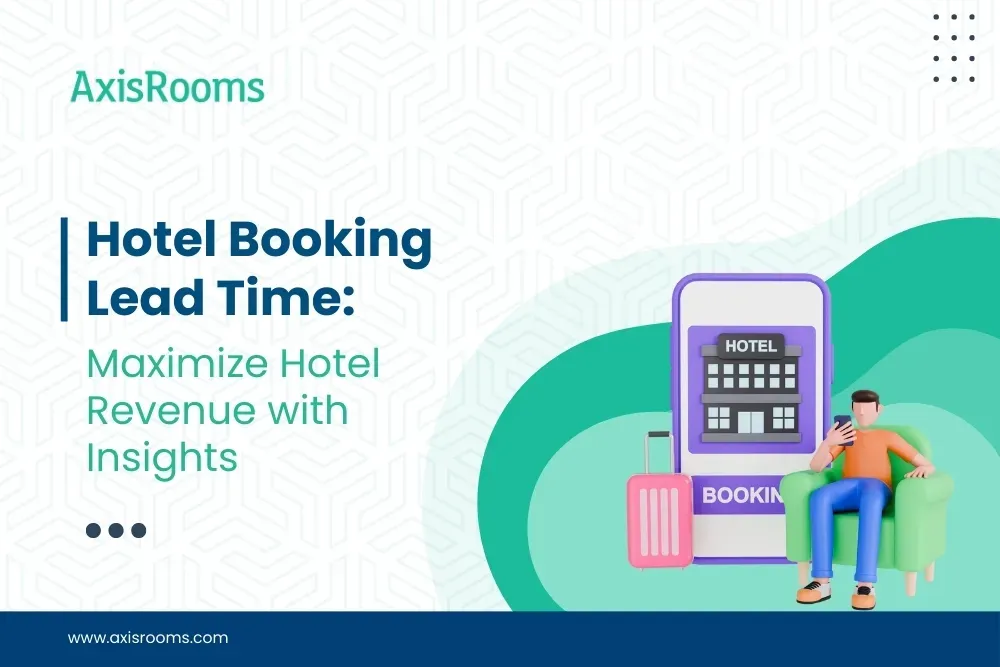Hotel booking lead time refers to the number of days between when a guest makes a reservation and their actual check-in date. For instance, if a guest books on July 1 for a stay beginning July 15, the lead time is 14 days. This seemingly simple metric holds immense value in pricing, forecasting, and overall hotel operations.
Why Understanding Lead Time Matters in Hospitality
1. Revenue Optimization
Longer lead times provide a better forecast window, allowing revenue managers to fine-tune pricing strategies, manage yield, and drive early bookings. Adjusting rates based on how far in advance guests book can significantly improve Average Daily Rate (ADR) and Revenue per Available Room (RevPAR) as part of a broader hotel revenue strategy.
2. Operations and Staffing
Knowing how far in advance guests typically book helps hotel managers predict occupancy levels and plan staffing accordingly. It minimizes overstaffing and ensures optimal guest service during peak periods.
3. Marketing Campaign Timing
Booking lead times guide campaign schedules. For example, if most weekend bookings come 10–12 days in advance, marketing emails or paid ads should be pushed at least two weeks prior.
4. Enhancing Guest Experience
When hotels anticipate guest arrival trends accurately, they can better prepare rooms, hotel amenities, and welcome experiences, increasing guest satisfaction.
Lead Time Trends: What’s Shaping Guest Behavior in 2025?

Lead time trends vary across property types, regions, and guest segments. However, recent industry data highlights the following shifts:
Shorter Booking Windows
Mobile-first travelers, especially millennials and Gen Z, prefer spontaneous bookings—often less than 7 days before arrival. Last-minute travel deals and flexible work schedules are driving this trend.
According to recent data, despite the rise in last-minute bookings, global hotel rates are projected to continue rising in 2025, albeit at a moderated pace compared to previous years. This stabilization is attributed to easing leisure travel demand and a surge in new hotel constructions.
Longer Lead Times for Events
Guests attending weddings, festivals, or business conferences usually book 30–90 days in advance to secure preferred rooms or group rates.
Segment-Specific Patterns
Business travelers tend to book closer to the stay date (often within 7–10 days), while leisure travelers, especially international guests, plan further ahead—typically 30–60 days out.
Let’s break down why understanding these segments matters. According to Hilton’s 2023 emerging trends report, almost two-thirds of travelers today said they often or always book a hotel based on access to local experiences, fundamentally changing how lead times vary by trip purpose.
Economic and Global Factors
Economic uncertainty, health advisories, and visa regulations have all led to guests delaying bookings or seeking refundable reservations.
Strategies to Maximize the Value of Booking Lead Time
Here’s how hoteliers can proactively use booking lead time as a revenue and operational lever:
1. Implement Dynamic Pricing
Adapt rates based on demand, lead time, and occupancy. For example:
- Offer early bird discounts to secure advance bookings.
- Adjust prices dynamically as the check-in date approaches to capture last-minute travelers.
Recent studies indicate that hotels adopting dynamic pricing strategies tend to achieve higher occupancy rates compared to those with static pricing models. A report by the Cornell Center for Hospitality Research found that hotels pricing above their competitors were more aggressive in revenue management, leading to better performance.
2. Incentivize Advance Bookings
Use promotions, value-add packages, and upgrades to encourage guests to book earlier. Examples:
- 15% off for bookings made 30+ days in advance.
- Free breakfast for bookings made during off-season months.
3. Segmented Offers Based on Lead Time
Create tailored offers:
- Short-lead travelers: quick weekend deals.
- Long-lead travelers: extended-stay packages or bundled activities.
4. Flexible Booking & Cancellation Policies
Guests are more likely to book early if cancellation is easy. Transparent, guest-friendly policies build trust and reduce booking hesitation.
5. Leverage Guest History
Using your CRM, identify patterns:
- Repeat guests who usually book late? Send them a “limited availability” alert.
- Early-booking families? Send vacation packages 60 days in advance.
Lead Time Optimization with AxisRooms Revenue Management System (RMS)
Tech Stack Essentials to Monitor and Act on Lead Time

1. Property Management System (PMS)
A centralized hub for all guest reservations, cancellations, and room assignments. It gives operational visibility to align resources based on forecasted check-ins.
2. Central Reservation Office (CRO)
If managing multi-property bookings, a CRO helps you centralize reservation management and track lead times across locations.
3. CRM Platform
Personalize your guest communication. Tailored emails based on booking patterns (e.g., “You usually book your holiday in May—here’s 20% off if you book now!”).
4. Business Intelligence Tools
Use lead time analytics to optimize room allocation, pricing strategies, and even room upgrades.
Innovative hotels are now implementing microservices-oriented dynamic pricing systems which have shown a remarkable 22% increase in revenue generation and a 17% improvement in pricing response time when properly integrated with lead time analytics.
Final Thoughts
Hotel booking lead time is more than a metric—it’s a strategic insight. By tracking and understanding when your guests book, you can optimize pricing, staffing, and guest engagement. When paired with smart tools like AxisRooms’ RMS, channel manager, and PMS integrations, lead time becomes a driver for profitability and guest loyalty.
For any hotelier, there’s that sinking feeling: empty rooms at the end of the day. But with the right lead time strategy, those vacancies transform into opportunities.
FAQs: Hoteliers Ask, We Answer : Hotel Booking Lead Time
Q1: What is the ideal booking lead time for hotels?
A: It varies by guest type and season, but most hotels aim for a 20–40 day lead time for optimal revenue planning.
Q2: How do I reduce last-minute cancellations?
A: Use flexible but structured policies—like free cancellation until 7 days before check-in—and collect partial payments upfront.
Q3: Can lead time affect OTA rankings?
A: Yes, OTAs often reward hotels with steady booking patterns and good inventory management, which are easier to maintain with predictable lead times.
Q4: How can I use lead time to improve direct bookings?
A: Create advance-booking offers exclusively on your website using your web booking engine and promote them via email or retargeting ads.
Q5: Should I use the same strategy for all guest types?
A: No. Business, leisure, and group travelers all behave differently. Create segmented strategies to suit their planning habits.


